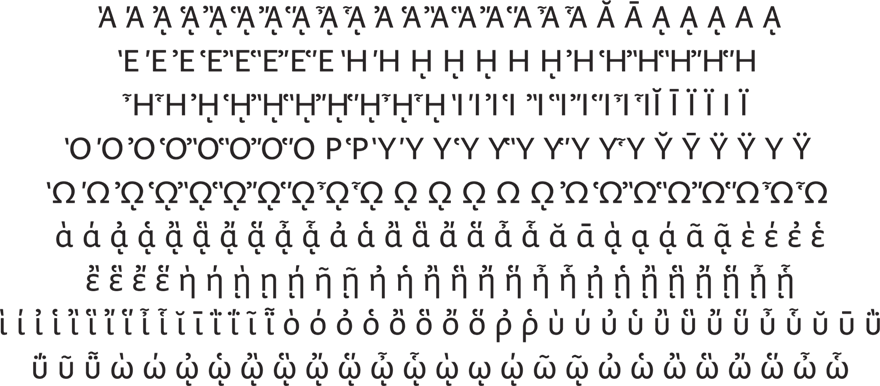Type as public service

Type surrounds us in a multitude of different forms, not just in books and newspapers, but on signs, television, computer monitors, cellphone displays and tablet screens. New communication technologies are linking people and cultures around the globe, driving a need to design and publish new typefaces at an ever-increasing pace. This is of course a commercial venture, but there is also an element of public service: typefaces preserve language and language preserves culture.
There are seven billion voices in the world, speaking about 7,000 living languages, more than 2,000 of which are in danger of going extinct, taking with them the unique heritage of their cultures. Itelmen, for example, the original language of Russia’s Kamchatka Peninsula, has fewer than 100 native speakers, most of them elderly. Itelmen is written using the Cyrillic alphabet plus the rare character Ӄ.

Given Itelmen’s status as a dying language, it comes as no surprise that out of the perhaps 100,000 commercial fonts in the world, less than dozen of them contain the Ӄ.
It takes over 50,000 working hours to design a typeface such as Greta Sans with the characters needed to support the 86 most common languages that use the Latin alphabet, in the range of styles required for professional-quality layout.
Another 50,000 working hours later, we are releasing a new version that will also support less common Latin-script languages as well as Cyrillic and Greek scripts. It can handle major languages such as Russian and Vietnamese, as well as obscure languages such as Itelmen and even extinct languages such as ancient Greek.

This raises the question of whether it is worth the extra hours to design characters that are so seldom used. Ancient Greek, for example, requires 217 additional characters compared to modern Greek, but printing the original texts of Socrates (or putting them on the web) is impossible without them. Supporting these languages with typefaces designed to produce high-quality text not only on paper, but on today’s digital displays may not be too interesting commercially, but it is an important step in preserving our planet’s cultural heritage.
This text has originally been written for the Financial Times Magazine, July 2013.
